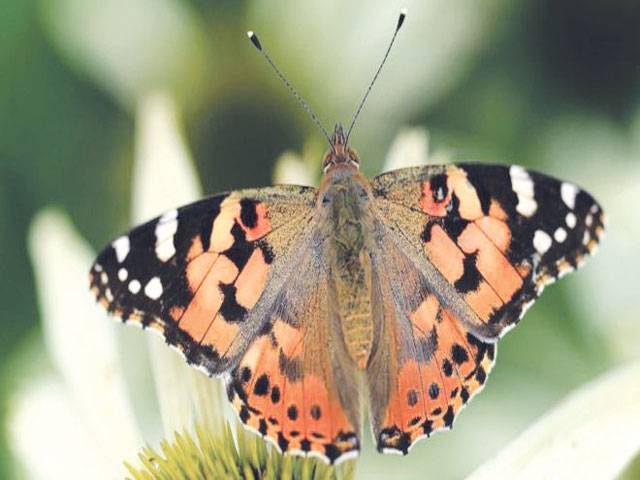LONDON-It’s been a good year for migrant butterflies, moths and dragonflies in the UK, according to a review of 2019 by the National Trust.
The charity says warm and wet weather saw the biggest influx of painted lady butterflies in a decade.
But the impacts of drought and wildfires in some parts mean it’s not been a good year for natterjack toads and water voles.
The fires saw the habitats of mountain hares impacted as well.
The changeable nature of the weather in 2019 meant there were mixed outcomes for species around the country. The warm spells in the earlier part of the year saw lots of moths, butterflies and dragonflies from Europe arrive en masse.
Chief among them was the painted lady butterfly. This orange and black spotted species is commonly seen in the UK but the last mass arrival was in 2008. Some 420,000 of the creatures were recorded in this year’s big butterfly count. This butterfly has quite the range, capable of travelling 7,500 miles from tropical Africa to the Arctic Circle. Another exotic visitor was the long tailed blue butterfly with 50 seen across the south coast of England. It was the third time in six years that the numbers of this delicate creature appeared to be increasing but successive generations haven’t yet made it through a British winter.
There were also large numbers of migrant dragonflies, while a rare moth, the Clifden nonpareil was recorded in Devon. It became extinct in the UK in the 1960s but has been trying to re-establish itself over the past few years.
“Sightings of migrant insects and birds are becoming more common. This is a result of our changing climate,” said Ben McCarthy, head of nature conservation and restoration ecology at the National Trust.
“Although this can seem exciting, the obvious flipside is how these changes will start to affect some of our native species already under pressure from intensive land use, habitat fragmentation and climate change.”
Grey seals around the UK appeared to be doing well despite the 50% mortality rate of seal pups at National Trust locations.
Thursday, April 18, 2024
Migrant species do well in warm and wet UK in 2019

-GN
3:56 PM | March 28, 2024
4:14 PM | March 23, 2024
Tobacco usage declines after decision on high taxes
April 18, 2024
Enemies of Pakistan are unable to digest investment in the country: Ataullah Tarar
1:29 PM | April 18, 2024
IHC restores Bushra Bibi's appeal for shifting to Adiala Jail from Bani Gala
1:24 PM | April 18, 2024
Hepatitis Challenge
April 18, 2024
IMF Predictions
April 18, 2024
Wheat War
April 18, 2024
Rail Revival
April 17, 2024
Addressing Climate Change
April 17, 2024
Justice denied
April 18, 2024
AI dilemmas unveiled
April 18, 2024
Tax tangle
April 18, 2024
Workforce inequality
April 17, 2024
New partnerships
April 17, 2024
ePaper - Nawaiwaqt
Advertisement
Nawaiwaqt Group | Copyright © 2024





